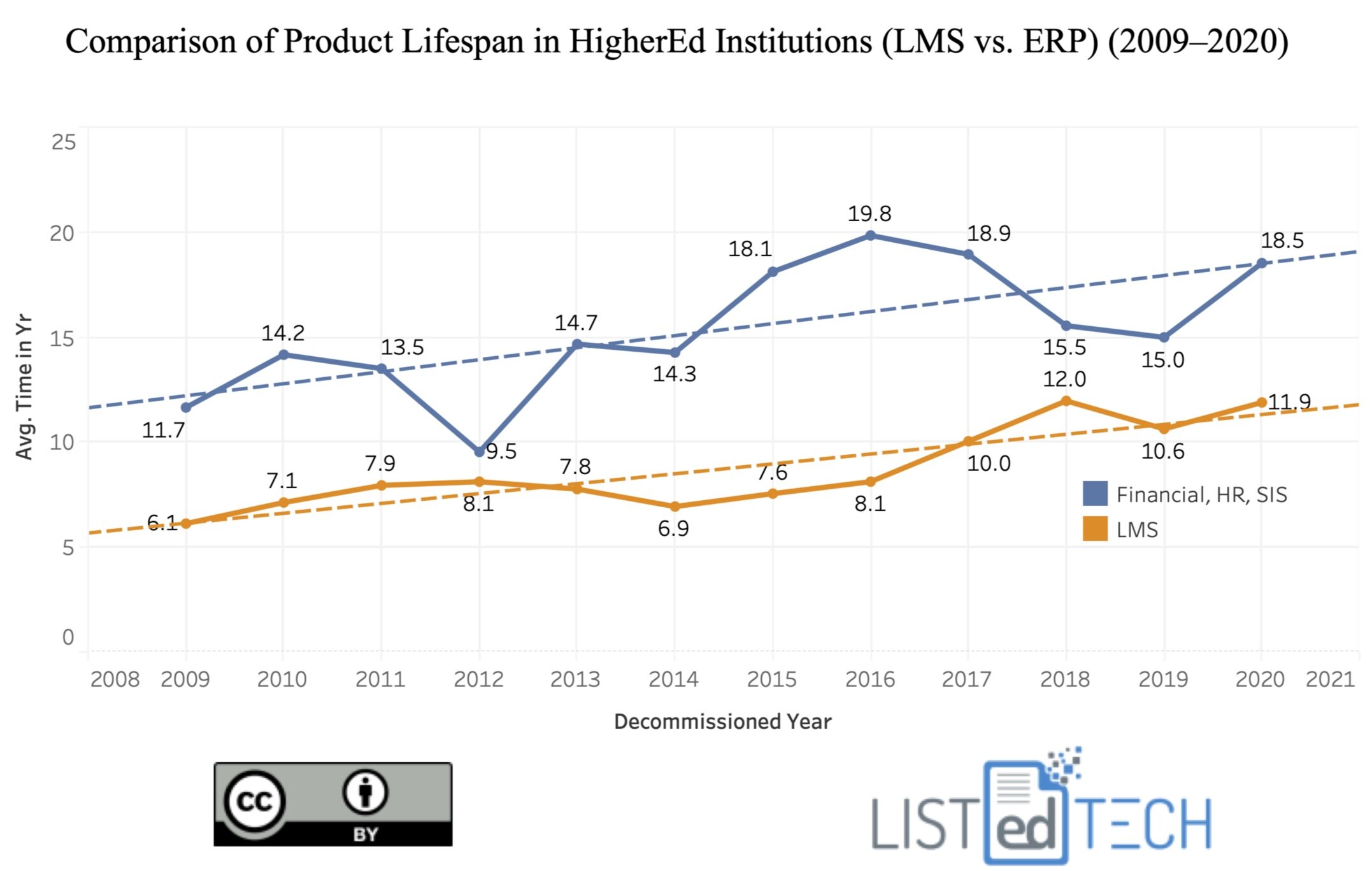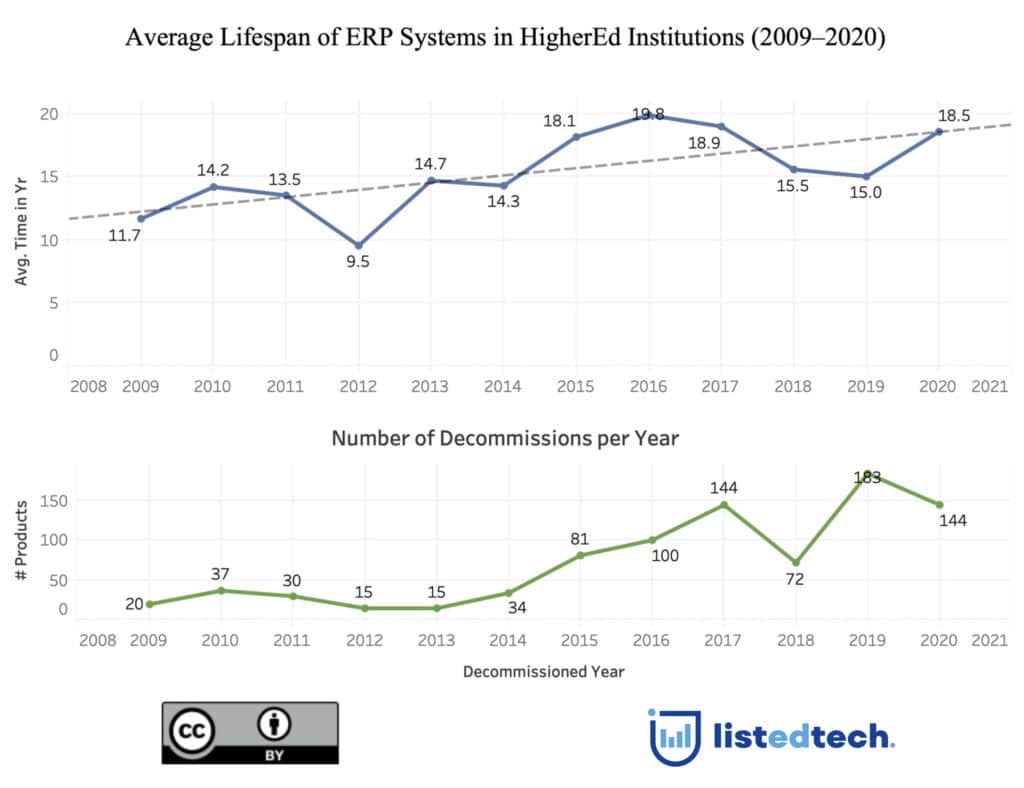
We could think that, since adapted standards have emerged in the past few decades, changing IT systems more frequently to adopt new technological features and offer state-of-the-art capabilities would be automatic. When I thought about this week’s article, that was my initial assumption. After all, as individuals, we change our cell phones and laptops every few years.
On the other hand, changing systems cost millions to HigherEd institutions, and with budget constraints, they are not in a position to change as often.
I looked at some data for learning management systems (LMS) to see if my assumption was right. Before we look at the results, let me share some information about the behind-the-graph data. We only selected systems for which we have implementation and decommission dates available. We also removed all institutions that have closed over the period to avoid data discrepancy.
The first graph below shows, for each year, the average lifespan of the systems that have been decommissioned on that year. This was calculated by simply subtracting the implementation year to the decommission year (ie. 2020-2010 = 10 years). The second graph is the number of systems decommissioned that year that were used to calculate the average.

After looking at the data for LMS, we can see that, over time, product lifespans are getting longer and longer.
Even if we have more data for the LMS systems, we can confirm that the trend fits the bill of ERP systems (financial, human resources, and student information systems).

Not surprisingly, we can see that the ERP systems are kept longer than the LMS systems. This 5 to 7-year difference has increased in the past years. ERP system’s lifespan has increased about 7 years in this 12 year period vs the LMS lifespan that has increased about 6 years.
We have a few possible explanations for this lifespan difference:
LMS systems have shorter lifespans because they evolve quickly (new features added every year) and require newer technologies to satisfy the student-facing interfaces. If we go back in 2010, very few LMS integrated video capabilities. Today, this feature is needed since most HigherEd institutions offer distance education.
For the ERP systems, this is a category where we still see homegrown systems (which have typically longer lifespans). They also are intricately connected to other systems in an institution IT infrastructure, therefore more complex to replace and require more investment financially and in human resources.
With the transformation of education delivery in 2020, will we see even shorter lifespans in the future?
For more info on LMS or ERP (Financial, HR, SIS) data, contact us to find out more about our subscription service.
Data Note:
The number of ERP decommissions looks to be increasing but that is misleading since, as mentioned, we only looked at the data with decommissions and implementations dates.
The data used for the graphs is from North America, Europe, Latine America. The Middle East and Oceana.

